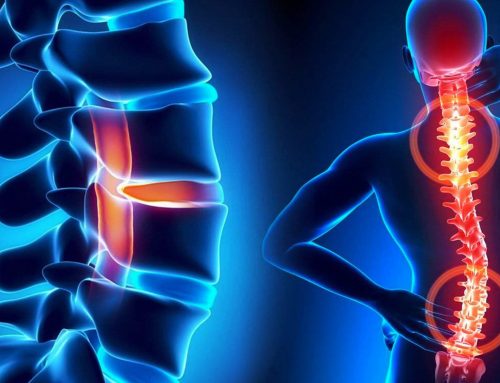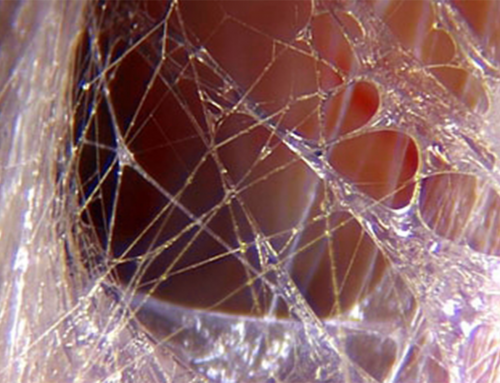
Fascia training – describes sports activities and movement exercises that attempt to improve the functional properties of the muscular connective tissues in the human body, such as tendons, ligaments, joint capsules, and muscular envelopes. Also called fascia, these tissues take part in a body-wide tensional force transmission network and are responsive to training stimulation.
Whenever muscles and joints are moved this also exerts mechanical strain on related fascia. The general assumption in sports science had therefore been that muscle strength exercises as well as cardiovascular training would be sufficient for an optimal training of the associate fibrous connective tissues. However, recent ultrasound-based research revealed that the mechanical threshold for a training effect on tendinous tissues tends to be significantly higher than for muscle fibers. This insight attracted major attention by showing that fascial tissues are much more than passive transmitters of muscular tension.
Fascia is not a new discovery in the anatomy field but it is a part of the human body that has long been neglected in the rehabilitation and fitness industries. It plays a major role in our body, our perception, our mobility, and our sense of well-being. Fascia is important especially in the rehabilitation of pain and prevention of injuries.

If you slice open an orange, you can see the fine web of white fibers that gives the fruit its shape and holds the juice and flesh in place in the tiny sacs. Fascia plays a similar role in the human body. “What many people don’t know is that because of its many sensors for movement, position, tension, pressure and pain, fascia is our largest sensory organ and the main source of pain in the body”. This state many specialists working as occupational therapists or in-patient rehabilitation in orthopedics and neurology.
This is one of the missing links in the rehabilitation practice of many therapists nowadays, who insist to separate the body into different parts. For this reason, we have “shoulder specialists”, “knee specialists” and “liver specialists”. Splitting the body into different parts was very useful from a research and scientific analysis perspective but we forgot to put it back and look at the body as a system and fascia seems to be the missing link.
The old model of human biomechanics sees the body as a stack of brick, meaning the head sits on top of the spine and the spine sits on top of the pelvis, etc. The new model of human biomechanics is called tensegrity.
When you start looking at the body as a fascial system instead of a stack of bricks, you start understanding the interconnections between different parts of the body. You will finally be able to understand how the pain in your cervical spine could actually be coming from the hips or even feet.
The fascia performs the following tasks for our body: shapes, moves, communicates, supports and each individual function is to be trained differently.

What training modalities can you include in your fascia training routine?
Fascial stretching – it is very different than stretching individual muscles and it improves the mechanical properties of fascia. Since fascia extends through the body in chains, (also known as anatomy trains), each exercise has to include as much of the chain as possible. This is why any attempt to stretch the fascia always involves the entire body, not just one part.
Rebound elasticity – it’s trained through springy movements. The aim is to strengthen structures and train your elastic storage capacity. The principle of tensional energy is the basis of all these exercises that work with elastic rebound. Elastic jumps are, for instance, very important for runners. They primarily exercise parts of the body like the Achilles tendon or calf aponeurosis. These parts are a frequent source of tension, pain, and inflammation in athletes.
Proprioception training – it includes kinesthetic exercises which are designed to make you more conscious of your movements and coordination. Training your kinesthetic sense or proprioception is becoming more and more important in today’s world, where we often get far too little exercise. These exercises should be performed mindfully and without distraction. An awareness of your body allows you to move smoothly and evenly. This awareness will help you treat and avoid injuries.
Fascial release – it involves a kind of self-massage of the fascia with special foam rollers, tennis balls, or rubber balls. The pressure placed on the connective tissue leads to an exchange of fluids in the tissue. This pressure will also remove lymph and other metabolic products. Fascia loves slow, steady, melting pressure that decreases fascia and muscle tone and can help relieve stiffness and adhesions. This also improves water and fluid exchange in the body. A process that helps with hydration, mobility and relaxes the autonomic nervous system.

Final thoughts
So, I hope I was able to give you a few reasons why everybody, but especially older people, should include some fascia training modalities in their daily activities. I’ve been using this concept for years now with many people. It has proven to be the greatest reason for my success as a rehabilitation trainer. Not to mention that it is the reason why I’m now still able to train, walk and live a normal life after an injury that could have crippled me for life. Especially, in a world where sitting has become the new smoking, the fascia is the first one that suffers.
For this reason, in a world that is constantly evolving towards more and more technology and less and less movement, I believe this will be the future of fitness. Mechanical movement has had its days, I’m afraid. They were important in an industrial world where people had to work in constructions and fabrics doing repetitive movements. But this is a new world we live in and personal training is not a luxury anymore. In a world where technological advancement and the creation of sitting jobs is leading the way, personal training is slowly becoming a need. Therefore, fascial training and rehabilitation knowledge are an absolute must.



